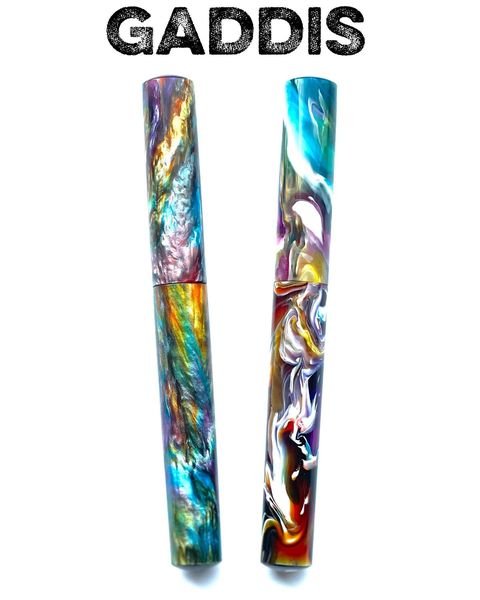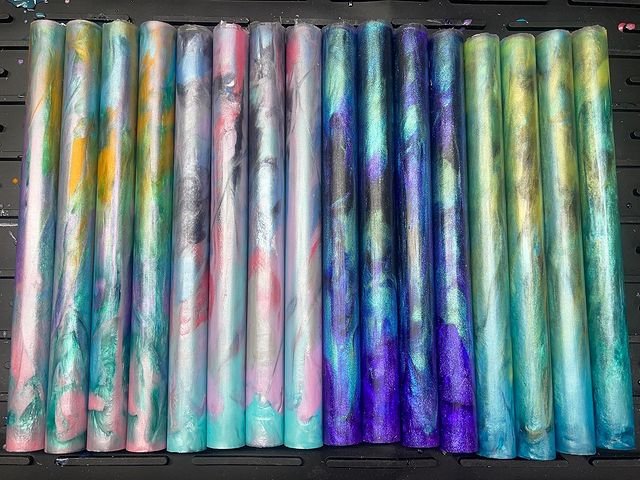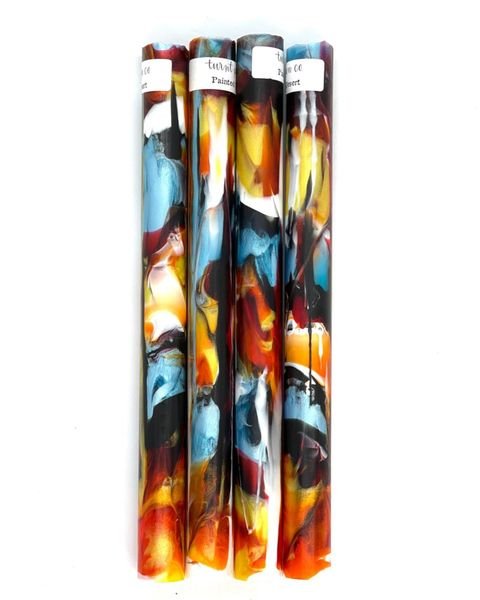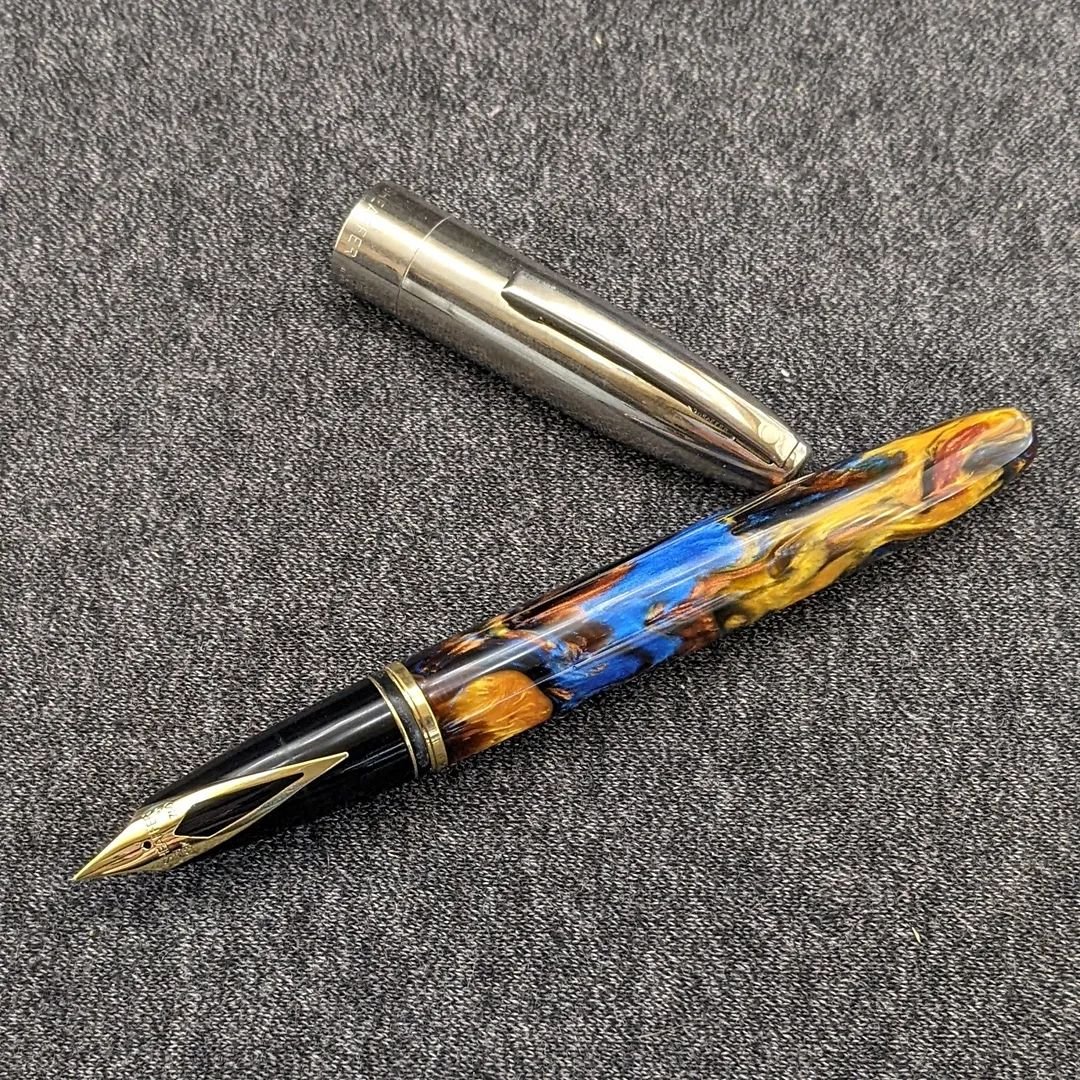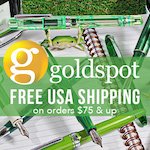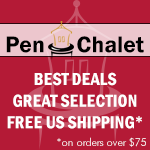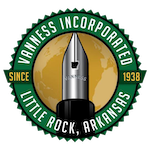(Caroline Foty's first fountain pen was a 1970s Sheaffer No Nonsense that still writes perfectly. Since she discovered pens by independent makers, she wants "one of each, please" and wants to meet all the makers. Maybe you do, too. She lives in Baltimore with pens, cats, and all kinds of fiber arts supplies.)
When a group of pen models are named Huxley, Grisham, Pynchon, Gaddis, and DeLillo, you might think there was something literary going on. You’d be right. Turnt Pen Company is the enterprise of Tim Crowe, whose day job is teaching English to eighth and twelfth graders in the Finger Lakes region of New York, south of Rochester.
Crowe started making handmade pens in late 2019. Prior to that, he’d been making electric guitar pedals and working on guitars, and making a few kit pens, as well as enjoying collecting and writing with fountain pens. Then he saw a kitless pen made by Greg Hardy of Hardy Penwrights, found that he lived about thirty minutes from Hardy, and called him up. During a long day in the Hardy shop, Crowe learned to make his first kitless pen, and also discovered that his father had student-taught in Hardy’s classroom years earlier. He sold some of his first “prototype” pens on Reddit before feeling confident enough to put his work out more seriously.
It wasn’t long before he decided he’d also like to try making his own materials, and got in touch with maker Bob Dupras, who gave him pointers and talked him through many iterations in the shop. Making materials is famously addicting, and he now has over 270 recipes in his books. Inspiration can come from anywhere – photos sent to him by customers, for example, or random things he sees around him. He also has help choosing colors from his sons Carson and Mikey – Carson’s blank choices are up to 25 and Mikey’s stand at 8.
“It’s like Christmas morning when you shoot that blank out of the mold and see what it looks like.” He hasn’t made pens out of a lot of those recipes, but “the coolest thing is making a pen out of material I also made, or making material to turn someone’s vision into a pen.” The entire process continues to inspire him, “working with my hands, turning a plastic rod into something useful.”
Vintage materials, though difficult to obtain, are on Crowe’s radar, as one of his favorite pens he didn’t make is a Mythic Pen Company pen made from a snakeskin blue cellulose acetate. An Eowyn model from Mayfair Pens is another favorite recent acquisition.
Pen companies are beginning to embrace the appeal of handmade alumilite resins, and some have taken note of Crowe’s materials. He has provided blanks to Leonardo Officina Italiana and Nahvalur, in batches of fifty to a hundred, for exclusive pens sold through the retailer Limited Pens Korea – several have already been released and there are more in the pipeline.
Crowe chooses words similar to Shawn Newton’s in describing his feelings about what he does. “I’m so lucky. I love my day job, and it gives me time to do this.” He wonders about the reasons there seem to be many educators in pen making. Is it because they write a lot? Because they have time in the summer to work more on their pens? He uses July to prepare for his one pen show, in DC – “three years ago, I didn’t know pen shows were a thing!”
Spare time is at a premium, with a demanding day job, service as a class advisor, and family life. When there is a little extra time, Crowe dabbles in music, not having entirely left guitars behind.
Choosing a name for his company let Crowe have a little fun with words. Not wanting to use his own name, he settled on the word “turnt” for a number of reasons. First, it’s an obsolete past tense form of “turn,” which speaks to the process of hand making a pen. Then, the word passed out of use and came back again with a different meaning, just as fountain pens were superseded by ballpoints and then came back with new appeal. According to the Urban Dictionary, “turnt” or “turnt up” means excessively excited or wound up, which seems appropriate for the amount of excitement fountain pens can generate today.
Crowe’s story sounds a theme mentioned by almost any pen maker you might talk to: the time and support given by other makers. “This is unlike anything I’ve ever been a part of.”
In addition to his website, Tim Crowe’s work can be seen at the DC Pen Show every August, and on Instagram @turntpenco. He plans to do a new blank and pen drop on Instagram at 1pm Sundays, letting followers vote the day before on which blank it will be. And this weekend's pen was kind of breathtaking so here it is:
Thank you Tim for sharing your story!


